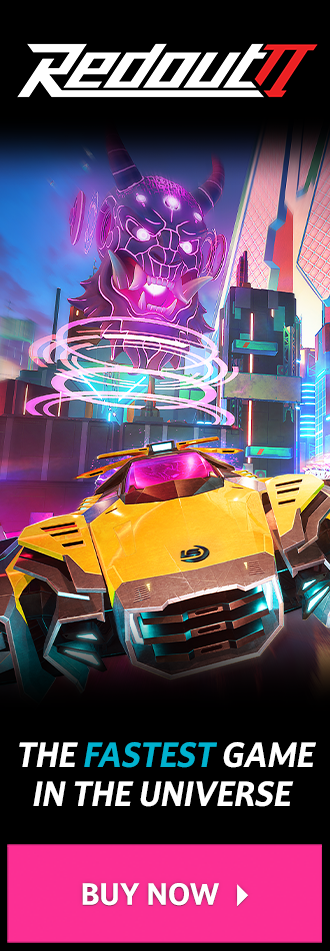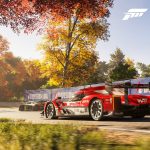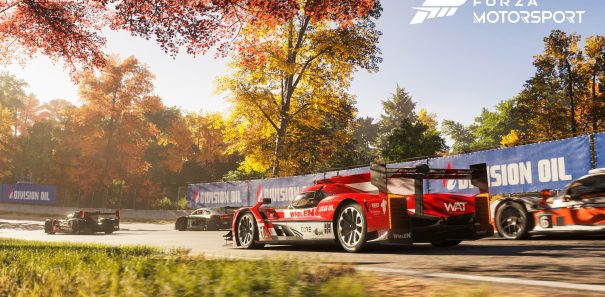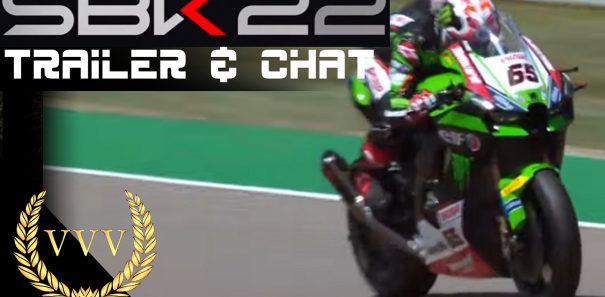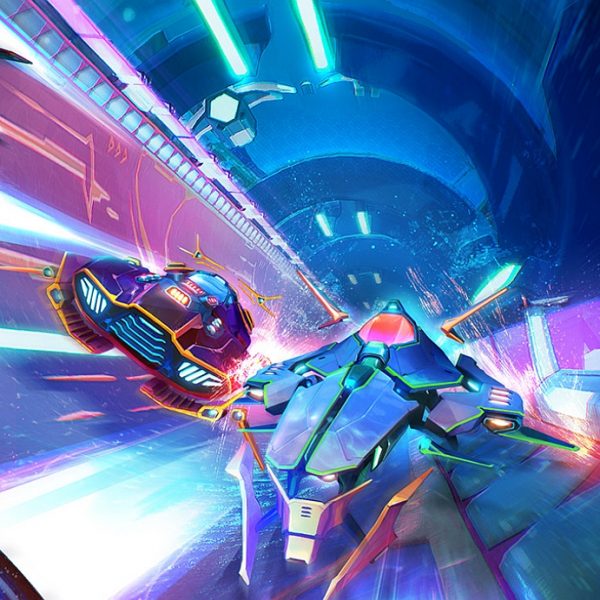EA should be thankful to Criterion for pulling Need for Speed out of the ditch it wedged itself into. For years, the series was veering dangerously off course as EA: Black Box attempted to steer it in erratic new directions, churning out annual releases that depleted in quality with each passing iteration. Clearly, this was a developer experiencing a burnout.
Which rather aptly brings us to Criterion, the creators of the acclaimed Burnout arcade racing series. 2008 saw the release of Need for Speed: Hot Pursuit, Criterion’s first foray into the NFS license following the success of Burnout Paradise, a focused, back-to-basics game that brought police pursuits back to the forefront along with Criterion’s trademark intensity, polish and appetite for destruction. Slightly Mad Studios may have put the series back on track with Shift the previous year, but it was Hot Pursuit that crossed the finish line.
And now history has repeated itself. EA: Black Box briefly returned behind the wheel to develop Need for Speed: The Run, a story-driven action driving game based on an extended cross-country race across the United States. On the surface, its ambitious premise certainly seemed promising. Early videos showcased how EA’s Frostbite Engine could be applied to a driving game, with its stunning visual effects and bombastic cinematic set-pieces, such as outrunning an avalanche, that would make Michael Bay moan in ecstasy.
Unfortunately, it had all the substance of a Michael Bay blockbuster, too. The story campaign could be completed in literally two hours, the plot was weak, the car handling was woolly and it commited the cardinal sin of tacking-on pointless quick time events. Once again, Black Box had tried too hard to redirect the series in the wrong direction, diluting the instant arcade driving thrills that Criterion perfected in Hot Pursuit.
Fortunately, Criterion’s success with Hot Pursuit didn’t go unnoticed by EA, who recruited them to develop the next Need for Speed sequel whilst having them invigilate all future instalments to ensure any previous dips in quality are a thing of the past.
Having successfully rebooted Hot Pursuit, Criterion set out to reimagine one of their favourite games in the series: Need for Speed: Most Wanted. But whereas Hot Pursuit was a fairly faithful replication of the last generation game of the same name, Most Wanted is a wildly different beast to the 2005 original. Because with Most Wanted, Criterion is on a mission to rewrite the driving games rulebook.

Drive it like you stole it
Taking heed from Criterion’s smash hit Burnout Paradise, Most Wanted is an open world racing game set in the sprawling urban playground that is the fictional Fairhaven city. But whereas the majority of racing games follow an established structure where you start off in a crummy car, rise up the ranks by completing races and earn cash before gradually being treated to the faster cars, Criterion has chucked nearly all its toys across the playground for you to find. See a tasty motor nestled on the curb? Simply park up, press the Jack Spot button and within seconds you’ll be roaring round Fairhaven in your gleaming new ride like you stole it.
While this naturally gives a glorious sense of discovery when you stumble across a poncy Porsche parked in a layby that’s yours for the taking, it ultimately detracts from the sense of progression and reward. When it’s entirely feasible to drive some of the fastest cars in the game within minutes of starting it up, you’re left with little incentive to find and drive the lower tier cars initially.
Having said that, Criterion is clearly not content with the stale structure of conventional racing games, tired of painstakingly pouring in the hours gradually grinding up in an underpowered car before levelling up to something you would actually want to drive. They have a fair point – for many impatient players this simply isn’t a fun gaming experience. There’s no denying that Most Wanted delivers instant gratification in spades.
Consequently however, it’s easy to become overwhelmed by Most Wanted’s open structure and find it all rather aimless. But once it opens up, you realise that Most Wanted’s overarching goal is in the title: to become the most wanted street racer in Fairhaven.

Unlike the 2005 original game of the same name which relied on god-awful live-action cut scenes to tell a story, Most Wanted lacks any form of narrative in favour of a very loose premise revolving around ten supercars parading through the city that represent the ‘most wanted’ racers that you must beat to claim your title. These cars rank as the most desirable in the game, from the ballistic Bugatti Veyron Super Sport to the quintessentially-Italian Alfa Romeo 4C Concept. Unlike the remaining cars dotted around the city however, these speed machines are not accessible from the outset.
Instead you have face them off in special Most Wanted events, a series of gruelling one-on-one duels that act like boss battles where you must not only win the race but also take out your rival after you beat them in a game of cat and mouse before claiming their car. Each one of the ten Most Wanted races can only be accessed when you have accumulated set amounts of Speed Points by winning races, blasting through billboards or evading Fairhaven’s police force, so there is at least some sort of end goal to keep you engaged if you preserver.
With only 41 cars available in total, minus the influx of post-release DLC of course, Most Wanted’s car roster feels somewhat skimpy compared to Forza Horizon. There’s no filler here, however – Criterion has clearly opted to offer quality over quantity, with a car list that contains the cream of the crop of each manufacturer. So Aston Martin is represented by the almighty V12 Vantage, Mercedes by the AMG SL 65 Black and SLS, and Pagani gets the contemporary Huayra. Unsurprisingly, since this is an EA-published game, there is also an overabundance of Porsches thrown in for good measure. My other gripe is there’s a distinct lack of older classic cars, as Criterion caters mostly for the modern market – where are all the old-school muscle cars for a kickoff?
They handle sublimely, too. Most Wanted’s car handling is unmistakably a product of Criterion’s careful craftsmanship, in what is their tightest driving model to date. There’s been some fine-tuning since Hot Pursuit to accommodate for Most Wanted’s open world, however. Cars initially feel too heavy and sluggish, but once you master the sharp steering you’ll be effortlessly zipping through traffic and drifting round corners at breakneck speed through tactful taps of the accelerator and brake. It’s therefore a responsive handling model that’s low on realism but high on arcade fun factor, with enough variance, depth and subtlety to reward skilled drivers with fast reflexes. Coupled with a colossal sense of speed, Most Wanted is a consistantly thrilling drive.
Fortunately, Most Wanted looks every bit as good as it plays. Considering its vast open world setting, the visuals look spellbindingly sumptuous, but it’s the minute details that put Most Wanted in a class of its own, like the way the blinding light blooms after you exist a tunnel, or the puddles that glisten on the worn tarmac and how the camera acts like a windscreen reflecting the sunglare whilst visible specs of accumulating dirt smear across the screen.
Particular praise has to be awarded to Criterion for Most Wanted’s superb sound effects. Engines snarl with ear-splitting savagery, which is only amplified when you tear through a tunnel, traffic cars whoosh past, audible drag affects your car as it soars through the air over jumps and crashes are positively devastating, with each impact rocking your living room on a decent home cinema setup. It really is the Battlefield of racing games in terms of award-worthy audio design.
Most modded
In one of the few throwbacks to the 2005 original, Speed Points can also be spent on modding your car. Don’t think, however, that this means you’ll be able to plaster it with tacky bodykits, rims and spoilers like before. It may come as a disappointment to NFS veterans who revelled in the original game’s integral cosmetic customisation, but Most Wanted’s upgrades are solely mechanical.
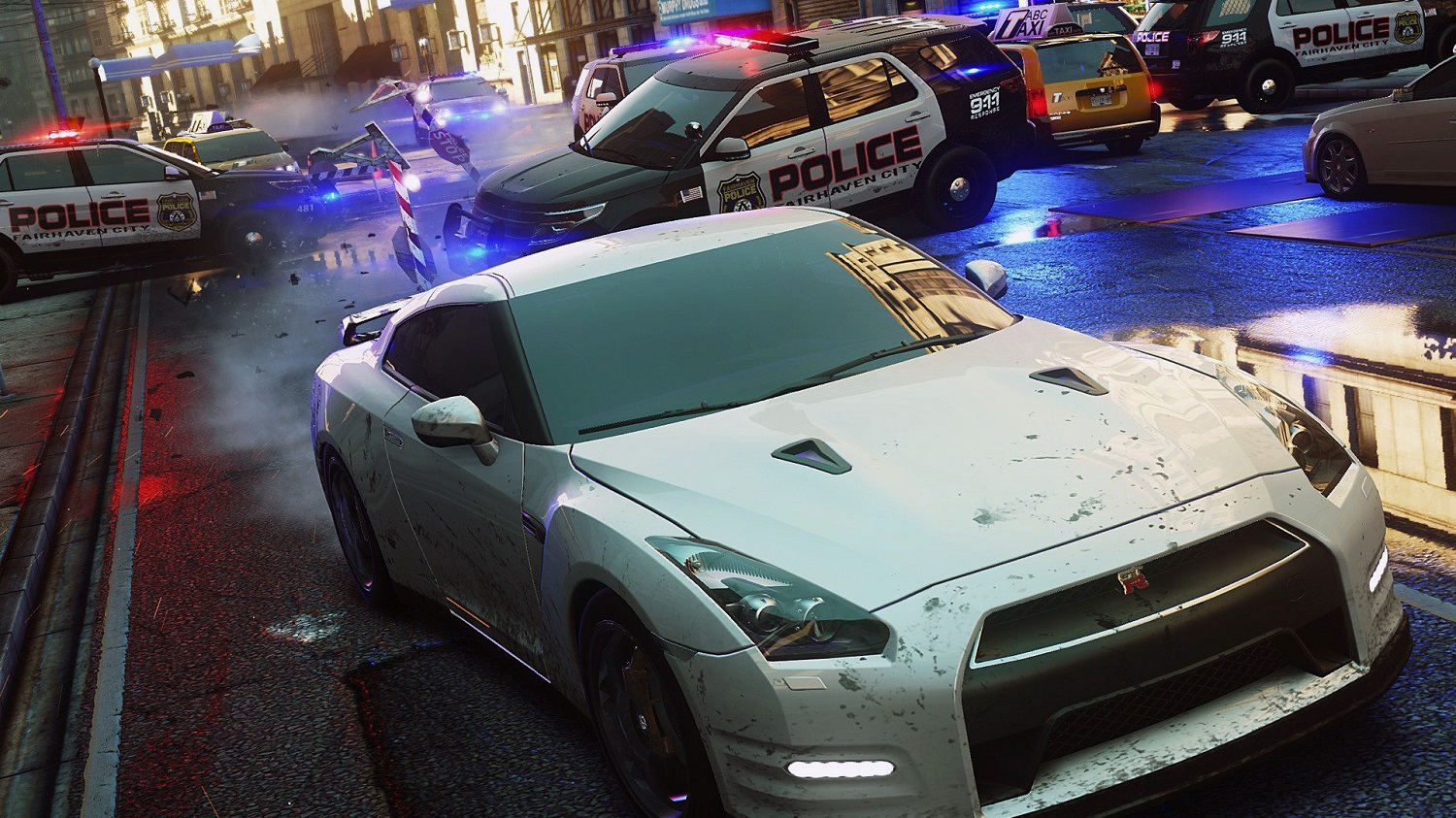
Every car is initially fitted with stock tyres, chassis, transmission and no nitrous, but completing events or amassing Speed Points allows you to equip nitrous boosts, reinforced chassis to withstand crashes and charge through police roadblocks, different sets of tyres to deal with off-road terrain and gear setups to improve performance in order to stay competitive, particularly in the tougher Most Wanted races, while experimenting with different loadouts can offer advantages for specific events. Races can be tackled in any order, but you would be wise to finish the race that earns you nitrous first.
It’s all accessed via Easy Drive, an unobtrusive in-game menu prompted by pressing right on the d-pad that acts as the central hub where you can select races, instantly change cars and equip mods on the fly. It’s not much different to its implementation in Burnout Paradise, but it works well in keeping the open world completely seamless and keep you in the driving seat at all times, although it can be cumbersome to use whilst driving.
The only downside is that, by replacing a traditional garage with Easy Drive, you have to teleport to specific spawn points where you originally found each car if you want to swap rides, which isn’t very convenient if you were on route to a destination. Speaking of which, the in-game map takes an age to load in contrast to Easy Drive’s instant access.
Speed Racer
Despite being set in an open world where freedom of choice is the order of the day, events are restricted to five per car with varying difficulty in order to compensate for the meagre car list. Consequently, while it’s an effective way to encourage you to drive every car in the game, you’re in trouble if you grow attached to a particular car if you want to complete every event. Events also tend to repeat, so you’ll sometimes find yourself racing down the exact same routes in different cars.
Being a Criterion game, races are aggressive affairs that result in a fair amount of paint trading and, of course, spectacular crashes when you inevitably lose your concentration for a split second and smack head-on into a wall. As ever, the damage modelling is comprehensive as the cinematic camera angles do a decent job of highlighting your mangled wreckage, if slightly compromised – these are licensed cars after all, so don’t expect Burnout Paradise levels of chassis-bending car torture porn.
The only disappointment is the omission of the takedown camera, a Criterion staple whereby the camera would swoop over to your rival racer in the midst of a slow motion crash that you caused, although it’s perhaps Criterion’s attempt to differentiate between NFS and Burnout.
Blatant AI rubber banding is another issue, particularly in the harder one-on-one Most Wanted races. While it certainly helps to ramp up the intensity when your opponent is constantly in your sights, it’s frustrating when they miraculously soar ahead and beat you at the last second after you smash into a Sunday driver just before the finish line despite the fact you were miles ahead.
Races range from standard point-to-point sprint races, circuit races and time trial Speed Runs where you must maintain an average top speed whilst negotiating heavy traffic, but without Hot Pursuit’s role-reversing cop chase events and Burnout’s crash junctions or Road Rage events there’s unfortunately a lot less variety than in Criterion’s backcatalogue.
Still, you’ve got to love the quirky abstract intros that pan out before each race, which show Criterion at their most creative – you’ll see everything from police cars falling from the sky to cars being morphed out of fragments of splintered glass and rising from ice.
Outrun
Then there’s the Ambush events, which have one simple object: evade the fuzz as quickly as possible. Most Wanted’s police chases are fast, frantic and relentless – just as they should be. Indeed, it’s exhilarating having literally a dozen police cars swarm around you with dogged determination, particularly when you’re already in the midst of a close street race, although I can’t help but feel they sometimes take their jobs a tad too seriously – these cops are downright suicidal, and will stop at nothing to take you down just because you strayed over the speed limit slightly. They’ll ram you relentlessly, attack you head-on and even jump off cliffs in a bid to catch you in addition to setting up roadblocks and deploying spike strips.
Most Wanted adopts a GTA-style heat system. Cause enough trouble, and the cops will soon employ tougher tactics such as faster cars and SWAT vans to batter you as you enter higher heat levels. Staying in the vein of GTA, in order to evade the law you have to stay out of their vision represented on the GPS for a sustained period of time, which is often challenging. Your best hope is to use the environment to your advantage by outrunning them and laying low below an overpass whilst your heat level decreases.
While entertaining and enthralling, Most Wanted’s police pursuits become unwanted when you’re trying to start an event. It’s incredibly frustrating when you’re en-route to an event marker only to accidentally tap a car in sight of the boys in blue and become embroiled in a time-wasting top heat level pursuit which you have to evade in order to enter the race.

The races do a decent job of giving you a guided tour of Fairhaven’s distinct districts – one minute you’ll be careering through a construction yard, the next you’ll be storming down a sewer drain.
Fairhaven lacks the colourful charm and character of Paradise City however, swapping coastal beach fronts for dreary docklands and slovenly backalleys. Indeed, this is a comparatively gritty, dingy urban environment packed with tight turns, busy intersections and congested highways that offer less opportunities for raw speed compared to Hot Pursuit’s vast open stretches.
Whereas Forza Horizon’s rendition of Colorado is more picturesque, it felt disappointingly barren with little to keep you occupied. Fairhaven on the other hand is diverse and fun to explore, if rather compact. What’s more, it’s one of the few racing game open world maps that can actually be classed as ‘open’, giving you free reign to fully explore off-road open areas, discover shortcuts guarded by fences and jump off rooftops in contrast to Horizon’s restrictive roads. Horizon lets you play in a closed sandbox, whereas Most Wanted lets you loose in an expansive adventure playground.
While the single player component can become samey with its lack of race types, it’s abundantly clear that Most Wanted is designed to be played online. It’s here that Most Wanted’s open structure suddenly starts to make more sense, making for one of the most addicting and entertaining racing game multiplayer experiences available.
It’s all thanks to Autolog 2.0, an updated version of Criterion’s revolutionary stat-tracking system that now keeps tabs on every conceivable facet, from fastest Speed Runs to your longest jumps. Meanwhile, all this information is relayed to your friends, challenging them to beat your high scores and vice versa. It’s an effective way of making you feel constantly connected to the competition – in a neat touch, your friend’s faces are even smugly stamped on billboards if they ploughed through it faster than you.
Online competitive multiplayer follows Most Wanted’s carefree attitude – free roaming is made all the more fun with human opponents, which makes driving to destinations less of a chore. In fact, even simply driving to events is turned into a hectic mini race.
Player hosts can setup SpeedLists, a series of back-to-back events that can take on the form of point-to-point races or challenges, such as who can execute the longest drift or jump the farthest. Some challenges even require cooperative play, with tasks including synchronised drifting and securing near misses with one another. It’s all very fun, evoking a light-hearted party game atmosphere with a variety of gameplay that’s sometimes lacking in the single player.

In many ways, Most Wanted feels like Burnout Paradise Mk2 with a Need for Speed badge stamped on it. Despite Criterion’s best efforts to reinvigorate the genre, it still feels a tad too familiar compared to Forza Horizon’s refreshing cocktail of authentic driving thrills on the open road, and its open-ended structure and lack of narrative hook may leave some players cold, particularly if you predominately play offline.
Once you get over its startling lack of structure and overfamiliarity however, Most Wanted is a non-stop high speed adrenaline rush that represents Criterion at their absolute pinnacle, blending the best of both brands into one hyper hybrid of a package that further reinforces them as one of the best British racing game developers.
Exactly which direction the series will head down next is anyone’s guess, but with EA Gothenburg said to be handling the next Need for Speed, Criterion can hopefully return to Burnout in order to give Need for Speed its unique identity back which it has arguably lost over the years.



